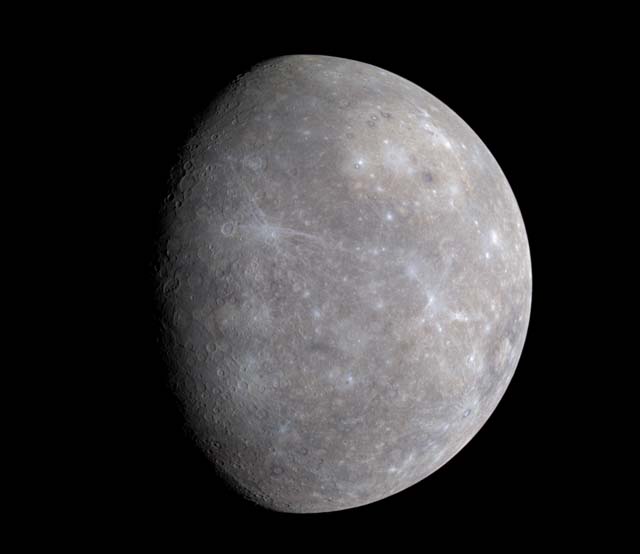[/caption]
Even though the Mercury flyby happened earlier this week, you can look forward to days and days of images. I’m nowhere near finished being amazed and entertained by the deluge of images captured by MESSENGER.
This latest image was captured when MESSENGER was about 20 minutes from its closest approach – at a range of 5,000 km (3,100 miles) of the tiny planet. The image is so crisp and clear that features as small as 400 metres (0.25 miles) across can be distinguished.
The large crater is located near Mercury’s equator on the side of the planet newly imaged by MESSENGER. I’m guessing it has no name, since it’s never been seen before! Around the crater are hundreds of smaller, secondary impactors. Some of these create long linear chains that look like machine gun fire. These occur when an asteroid or comet is torn apart by gravity, and then rain down on the planet in a straight line.
By counting craters that sit on top of the large crater’s ejecta blanket, and then comparing this count to the ones inside the crater, scientists will be able to calculate how old the crater is, and when it was formed.
Mission controllers also announced that they’ve received all 500 megabytes of data captured by MESSENGER as part of the flyby. The spacecraft has sent back a total of 1,213 images from its Mercury Dual Imaging System cameras.
They also revealed details about the flyby. According to their calculations, the spacecraft missed the targeted aim point by about 8.25 km (5.12 miles). This still give MESSENGER the gravity assisted speed boost it needs to meet up with the planet again and eventually go into orbit.
Original Source: MESSENGER News Release


This is a nice piece of work. I’m looking forward to more excellent photos… rocket science at its best and money well spent!
They are awesome pics,been spending alot of time on the messenger site,can’t wait till it goes into orbit around mercury,what a beautiful,barren planet,can’t wait to hear the threories on these impact craters
Don’t you mean pictures of Canada? 😉